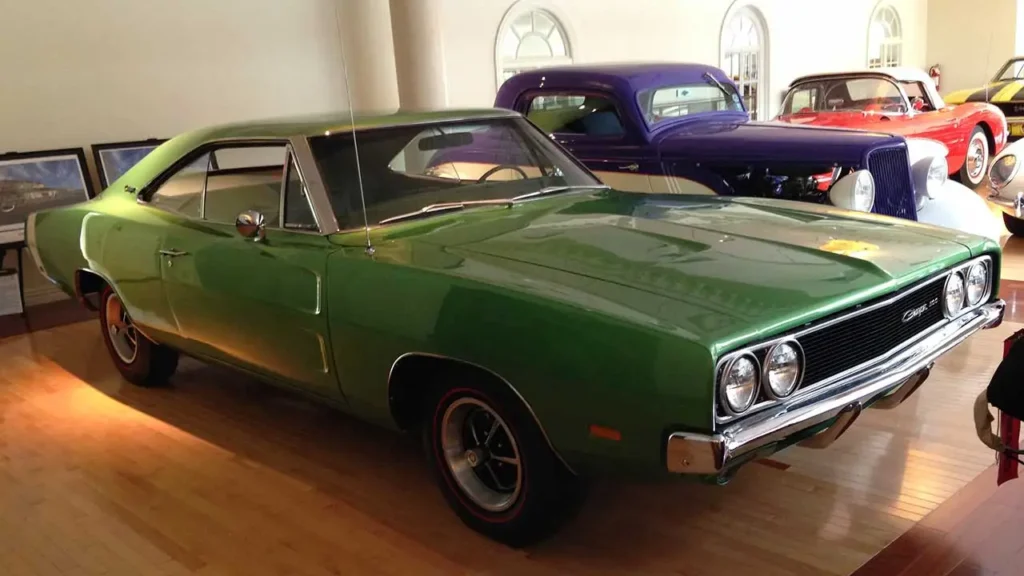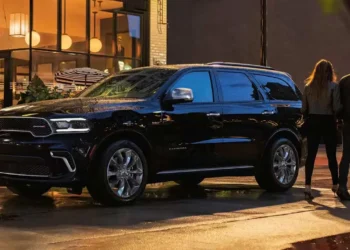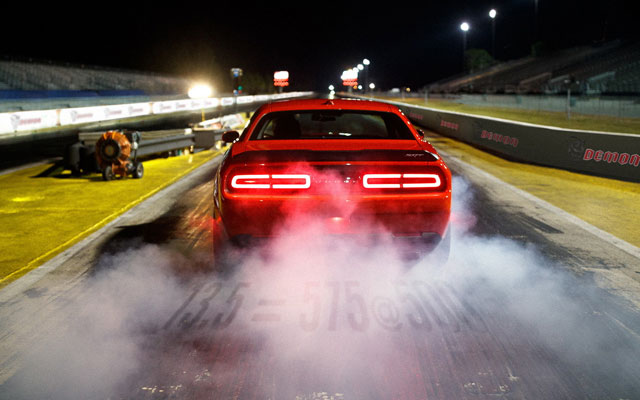Back in the day, if a car won in NASCAR, the sales at dealerships would spike. We’re talkin’ late 60s to early 70s when NASCAR cars were “stock cars”—basically, cars that anyone could stroll into a dealership and buy. The saying then? “Win on Sunday, sell on Monday.” And it wasn’t just talk; it worked.
Chrysler, at that time, jumped into the action with muscle cars developed specifically to shine in NASCAR. They took “stock” to the edge, releasing some of Detroit’s most unusual vehicles. Think of the Plymouth Super Bird, with that massive wing—built to win. But, Sheboygan Chrysler’s staff pointed out to me, that another MOPAR vehicle was in the game too: the 1969 – 1970 Dodge Charger 500.
1969 – 1970 Dodge Charger 500 – A Muscle Car with a Twist

So in ‘68, Dodge tried a new Charger design, one that looked great, sold well, but didn’t really cut it on the racetrack. Tests suggested fixing aerodynamics: a flush grille and a filled-in rear windshield. Dodge decided to make 500 of these souped-up Chargers, dubbed the “Charger 500,” and unveiled it to the press in mid-1968. They even gave it a front spoiler, which NASCAR initially frowned upon, sayin’ it made the car seem more race than street. After a few debates, NASCAR approved it.
Dodge dealers got word in July that the Charger 500 would be limited in stock, especially with that 426 Hemi V8 engine. Priced at $3,843 with a $648 Hemi upgrade, it wasn’t cheap but certainly a cool-looking, sexy car. Experts today guess Dodge lost money on it, just to qualify for NASCAR. Despite all this, the Charger 500 didn’t dominate the way Chrysler had wanted.
Yet Chrysler didn’t give up. They moved on to the Dodge Charger Daytona, a wild car with a long nosecone and high rear wing. Even though the Daytona’s more famous, the 500 is a rare Dodge Charger. Today, owning a Charger 500 will cost a hefty sum—a true collector’s piece and an apt Dodge for even ladies. For instance, a few examples of the 1970 Dodge Charger at Classic Cars demand 6 figures.
1970 Dodge Charger 500 Came With Some Tweaks
Dodge’s 1970 Charger came out with just a few tweaks from the previous model. One of them was a front loop bumper, adding a more “formal” touch. Dodge kept the cost down to $3,001 for the base model, swapping in a bench seat instead of buckets (which you could get as extras), cutting out door pockets, adding simpler window trims, and even making the clock an option.
Now, the 70 Charger 500 wasn’t what it’d been back in ’69. This year’s model had bucket seats, a clock, and some fancy 500 logos on the grille and tail panel, not exactly the high-performance machine people knew from the year before. For cars built from August to October of ‘69, you’d find the Charger Arrow emblem on the rear panel. But come December, all 500s had the new emblem like they decided to change the look halfway through.
You could get the Charger 500 with a 318, or if you were after a bit more kick, go for the 383 2v or 4v. Starting price was $3,139.
Exterior
The top tier was the R/T model, listed at $3,711. It packed the brand-new 390-hp 440 six-pack engine. Some fresh styling touches for this one—scoop on the doors with an R/T emblem, plus stripes (you could choose bumblebee or a tape stripe along the body).
Interior
Inside, the 500 and R/T came with proper bucket seats, all-vinyl or cloth/vinyl in limited colors, plus an optional center console or armrest. The gear shift was new too: pistol grip. First-time buyers could even add an electric sunroof, though that meant ordering a vinyl roof as well.
And the colors were Loud as ever—Plum Crazy, Sublime, Top Banana, Panther Pink, Hemi Orange. There were also options mid-year: a rear spoiler and hood decal with “440” or “Hemi” in bold, silver letters on each side.
Final Words
While the muscle cars era wound down by 1974 due to emissions regulations, the 1980s saw a resurgence of interest in performance cars like the 1982 Pontiac Firebird Trans Am, and the 1985 Ford Mustang GT. The Charger is still a muscle car but now it has a twin-turbocharged V6 named Hurricane, producing either 420 or 550 horsepower.











